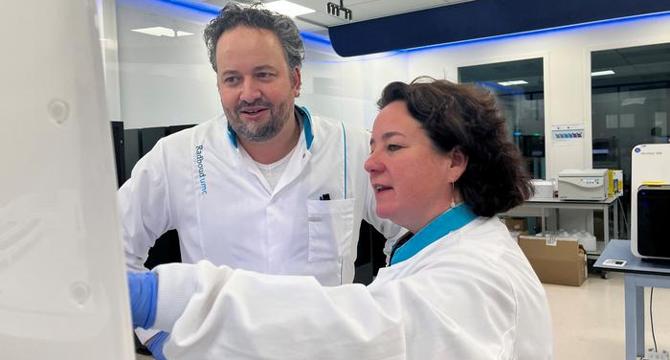Bioengineer
7d
74

Image Credit: Bioengineer
Genetic Reanalysis Leads to Accurate Diagnoses for Over 500 Patients
- A pan-European collaboration of scientific researchers has achieved groundbreaking genetic diagnoses of over 500 patients suffering from rare diseases that had previously been impossible to solve. The collaboration, structurally known as Solve-RD, employed a reanalysis of genetic data from 6,447 patients and genetic information from 3,197 unaffected family members across twelve European nations and Canada. This allowed for a standardised schema, optimising genetic analyses for a wide variety of conditions for which a diagnosis had previously been unattainable due to genetic complexities.
- Approximately 70% of over 7,000 identified rare diseases have a genetic basis, and so vast numbers of patients have no recourse until breakthroughs such as that detailed here occur. The establishment of the European Rare Disease Research Alliance (ERDERA) aims to further such breakthroughs by integrating data from additional European medical centres, hoping to amplify the diagnostic efforts initiated by Solve-RD.
- To this end, ERDERA is planning to augment the existing database from 10,000 to over 100,000 genetic datasets. Advanced genetic techniques, such as long-read genome sequencing and optical genome mapping, are being emphasized as critical tools to such expanding research frameworks.
- In establishing strong interdisciplinary methods harnessing the expertise of clinical geneticists, data scientists, and other specialists, Solve-RD has facilitated a rigorous peer review of analyses from diverse medical disciplines. The framework is designed to optimize genetic analysis processes while ensuring diagnoses are not just accurate but also actionable.
- Patients receiving diagnoses can now receive consistent and accurate evaluations regardless of their geographic location. The publication of the outcome of genetic research efforts in Nature Medicine provides considerable hope of significant advancements in medical diagnoses and treatments.
- Groundbreaking initiative has redefined how rare diseases are diagnosed and treated while providing illumination for future breakthroughs in medical science. The promise of such international collaborations spearheading scientific research dramatically underscores the complexity and significance of scientific cross-border partnership in modern medicine's fight against rare diseases and genetic disorders.
- According to Holm Graessner, the Solve-RD coordinator, such initiatives are committed to scaling up under the ERDERA umbrella aiming to widen the reach of diagnostic capabilities. This emphasizes the milestone achieved with the diagnosis of over 500 patients while also aiming to uncover diagnoses for those who remain undiagnosed, thereby further enhancing the reach and impact of rare disease research.
- With the increasing power of more advanced genetic techniques and international collaborations, the potential for diagnosing and treating rare diseases increases significantly. By drawing connections between genetic variants and patient data across a large population, the researchers can unveil patterns that inform clinical decisions and pave the way for more personalized treatment options.
- This recent success not only improves diagnostic accuracy but provides researchers with ample data to fuel inquiries into potential therapies while leading to patient-centered research frameworks that could revolutionize the entire field of rare disease research.
- The consortium's collective achievements continue to exemplify the immense potential such a collaboration holds in addressing global health challenges. The promising results from this ongoing endeavor signify a pivotal step forward in the quest for effective diagnostics for rare diseases while paving the way for future advancements in medical science that are both exciting and transformative.
Read Full Article
4 Likes
For uninterrupted reading, download the app